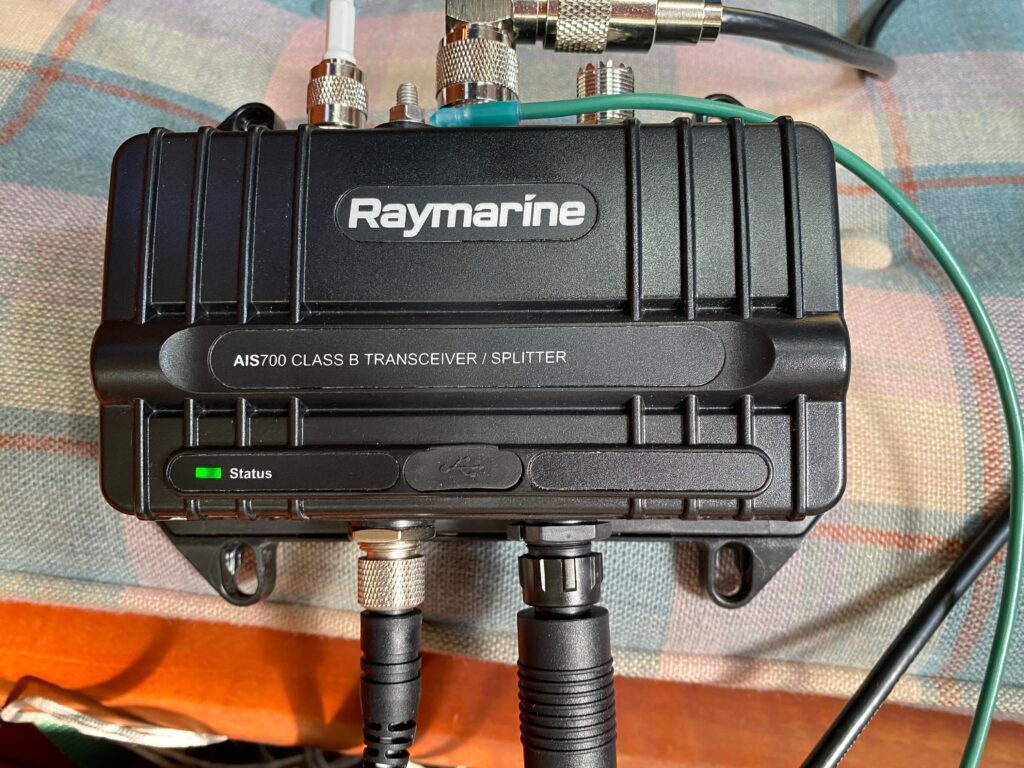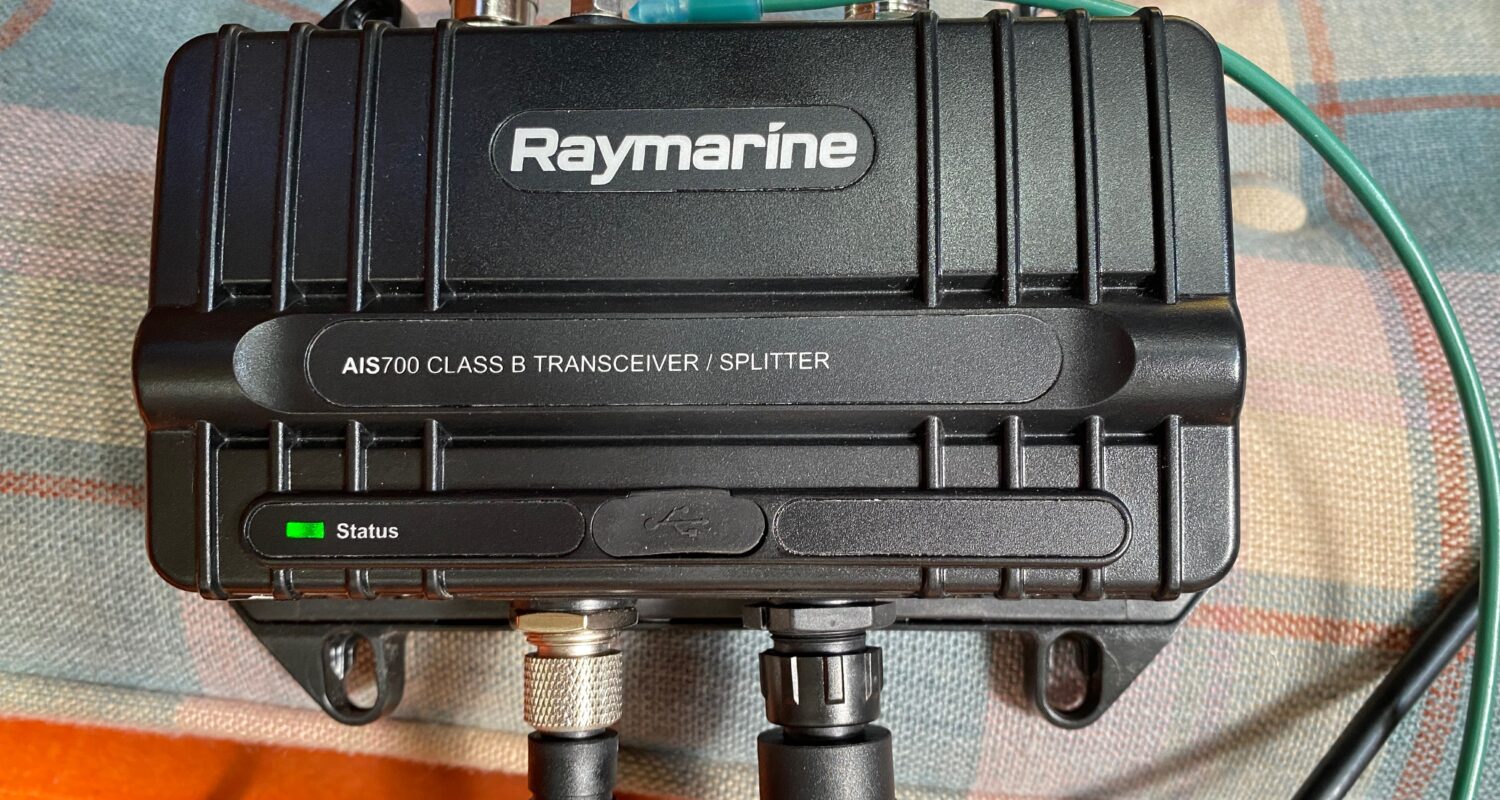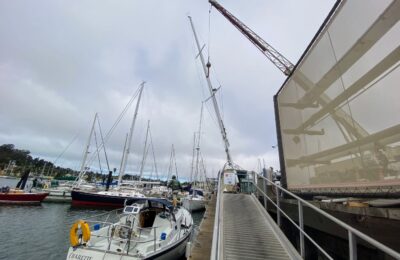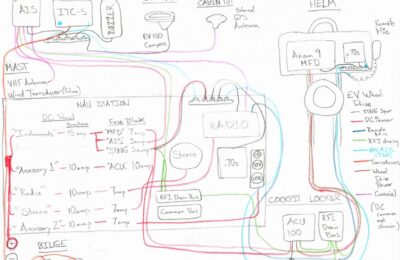Summary:
AIS transceivers are good – try to buy a 5 watt one.
AIS Systems Generally
International “Law Of The Sea” falls under the purview of the United Nations, a body interested in the safety of commerce and the ocean itself. The International Maritime Organzation (IMO) is the arm of the UN that helps guide the formation of international rules to govern shipping and prevent pollution. In order to help ships not run into one another, the IMO developed guidelines for the Automatic Identification System (henceforth AIS) and required big commercial boats to have AIS starting in the early 2000’s. AIS shall:
- provide information – including the ship’s identity, type, position, course, speed, navigational status and other safety-related information – automatically to appropriately equipped shore stations, other ships and aircraft;
- receive automatically such information from similarly fitted ships; · monitor and track ships;
- exchange data with shore-based facilities.
Registering an AIS system
For the casual boater / serious yachtsman / dude who goes sailing, there are really only two bureaucratic steps to take advantage of the AIS system
One must obtain a Maritime Mobile Service Identity number. This is a unique identifier (9 digit number) that identifies your boat among all the others. Registering for an MMSI number is free and can be done at the BoatUS web site.
The second step is to ensure that your MMSI number is programmed into your AIS device. In my admittedly limited experience the manufacturer or seller of your AIS system wants to do this programming for you, so that you do not screw it up.
Range and Reception
The primary range and reception of an AIS between transceivers is in a local context (floating on the ocean and not hitting one another).
A second range and reception is that satellites above the earth are constantly listening for AIS broadcast information (spies!). These services gather data and provide a means of tracking ships (and fixed objects broadcasting AIS signatures). It’s another way for your parents/spouse/children to keep track of you.
Marine Traffic is a good free site with this information.
Classes of AIS devices
Class A devices are for commercial ships. Big ships. They use a protocol called SOTDMA and transmit at 12.5 watts.
Class B devices are for recreational boaters. There are presently (2020) at least two types of Class B transmitters:
2 watt transmitting Class B devices were the norm until recently, and utilize a protocol called CSTDMA. In a few minutes of googling I was unable to determine if 2watt AIS can be picked up by satellites. This may or may not be the case.
5 watt transmitting Class B AIS devices are now available, and use SOTDMA (like the class A devices). This stronger broadcast signal and different technology increases the likelihood that a big ship will see your sailboat sooner and not run you over. It also makes your signal perceptible to satellites.
AIS System Types for small boats
Receiver vs. Transceiver
Ten years ago, you could buy an AIS receiver device that would listen for AIS information from other boats but not broadcast its own information.
In my cursory research, nearly all AIS devices that are sold today are transceiver devices that both receive AIS info from other boats and also transmit their own data. If one is interested in safety, I can’t imagine why one would not want to broadcast his/her own information (save for drug running, prize-fishing, or nautical-trysting).
Antenna Splitter vs. Independent
An AIS device needs an antenna to broadcast and receive information via VHF. One could set up an independent antenna, or use a “splitter” that allows the AIS to share the same antenna that one would use for his/her normal VHF radio antenna. It seems like most new AIS devices have integrated splitters, because setting up and maintaining an independent VHF antenna would be a hassle.
Form Factors
AIS integrated with VHF radio
Example: Standard Horizon GX2200 Available for sale for $350.
All AIS systems that rely on VHF radio waves for transmitting and receiving must (obviously) connect to a VHF antenna, and so having the electronics integrated into a radio makes a great deal of sense. This is an affordable way to get AIS benefits without a fancy data network and with minimal cost. Anyone replacing a radio who does not already have AIS should get one of these, IMHO. As for the utility of the AIS itself, one limitation of the solution is the small size of the screen that would show other incoming craft. I also have no idea whether setting alarms is difficult or easy.
Stand-Alone AIS with Integrated/dedicated Screen
Example: Vesper Watchmate 850
This type of unit usually has a larger display than would the radio-integrated type. They have the advantage of being a self-contained gadget in terms of setting alarms and otherwise dealing with AIS information. Everything is in one place.
Black Box AIS
Example: Raymarine AIS700

A black box is just that – beyond an LED indicator, there is no way for a user to interact directly with the device. An external screen/display or other means of input and output is needed in order to monitor the function of the system and make use of all of the data. In a modern networked system, this is not a big deal, assuming one has at least one Multi-Function-Display that can communicate with the AIS system.



